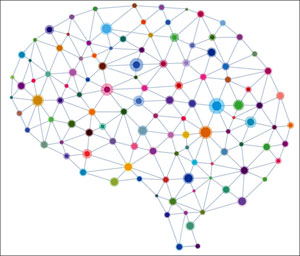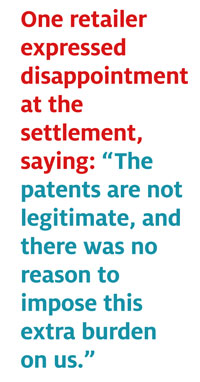One of the hottest buzzwords in business these days is “Internet of Things.” Cisco hypes it in TV commercials, and Google, Intel and Microsoft are reportedly investing in Internet of Thing technologies. Internet of Things conferences are held worldwide, and Apr. 9 was the fourth annual Global Internet of Things Day, with events held in more than 18 countries.
The term Internet of Things, now commonly referred to as IoT, was coined in 1999 by Kevin Ashton, who was trying to explain radio frequency identification to executives at Procter & Gamble. Ashton envisioned a world in which computers would communicate with passive RFID transponders on cases of P&G products and maybe even the products themselves. This would enable computers to collect and analyze information about what was happening in the real world, without people having to type information into a computer or scan a bar code.
Today, some companies have expanded the term IoT to include a wide range of smart devices, cloud computing, Google Glass and other technologies they are trying to promote. The truth is, experts struggle to define exactly what the Internet of Things is. The European Union has funded IoT research, but the project’s website does not define the term. Cisco says the IoT is a “network of physical objects accessed through the Internet.” TechTarget, a popular IT website, says it is “a scenario in which objects, animals or people are provided with unique identifiers and the ability to automatically transfer data over a network without requiring human-to-human or human-to-computer interaction.”
RFID Journal recently surveyed its readers to learn their views on the Internet of Things. Six percent of the 516 respondents said the IoT is just a buzzword without much substance behind it. Half said it covers RFID and other technologies that are important, and 32 percent said it is an important trend their companies take seriously.
With the growing media hype, many businesspeople see the Internet of Things as something important they need to focus on. The question is: How do you develop an IoT strategy when it’s not clear exactly what the IoT is?
Taken literally, the term Internet of Things covers any technology that links a physical object (other than a computer) to the Internet. There are, fundamentally, two reasons you would want to connect an object to the Internet. One is to be able to track and manage it. The second is to make it smarter.
Tracking and managing items is what RFID is all about, and many companies have been deploying RFID to identify assets, equipment, inventory, tools, work-in-process and other “things” to reduce operational costs, increase sales, improve safety and enhance customer satisfaction. Often, RFID data is filtered and transferred to software running in the cloud so it can be shared within an organization. Inventory data, for example, can be made available in near-real time to salespeople or to alert employees when goods need to be replenished.
The vast majority of “things” will be connected to the Internet via passive RFID technologies so they can be tracked and managed. This is because passive RFID costs much less than most other wireless technologies, does not require line of sight and is truly automatic. There are already standards, including the Electronic Product Code Information Services (EPCIS) standard, for sharing passive ultrahigh-frequency data with supply-chain partners via the Web.
Some items might be tracked and managed with other technologies, sometimes in conjunction with RFID. Vehicles, for example, might be located in a distribution yard with an active RFID-based real-time location system (RTLS), but use GPS and telematics systems linked to cellular networks when on the open road. And in some niche tracking applications, technologies such as 2-D bar codes, QR codes, infrared sensors or ultrasound, work better than RFID.
Tracking and managing assets, products and other things with RFID and sharing data via the Internet increases visibility and delivers other benefits. Take, for example, Almacafé, a subsidiary of the National Federation of Coffee Growers of Colombia. The organization uses passive UHF RFID systems to track premium coffee beans from farms through processing and warehousing to better compete in the global market. The RFID solution also helps Almacafé boost sales and improve customer loyalty by enabling coffee manufacturers and consumers to access information regarding the origins of a specific batch of beans via the Internet (see RFID Helps Ensure That Special Cup of Joe).
The buzz surrounding the Internet of Things is more about making objects smarter by connecting them to the Internet. Making products smarter increases the potential profit margins they bring, because they are perceived as more valuable. There are several ways companies can increase the perceived value of their products by connecting them to the Internet:
1) An object can provide more information about itself—where it has been, how it was produced and so on. Embedding an RFID transponder in a product could enable a consumer to read the tag and go to the Internet to find the product’s entire history.
2) An object can interact with other objects around it—for example, a printer might know that an ink cartridge being inserted is counterfeit and not allow it to be used.
3) An object can sense the world around it and react—a shipment of drugs might send an alert when it is being stored at a temperature outside an acceptable range, or a building might sense when rooms are empty and turn off the lights.
4) The object can be controlled remotely—a coffee maker might be programmed via the Internet to start brewing using a smartphone application.
Today, the Internet of Things is a fuzzy concept, and there is little agreement about which technologies are IoT technologies and which standards apply. What’s important is to focus on creating value for your company. That can be done by tracking and managing “things” more effectively or by adding intelligence to your product. Choose the right technology for each application, and don’t worry about whether the “experts” call it an IoT technology or something else.
Smart Product Interfaces
What makes a product “smart” is not always clear. Whether improving the way customers control products makes the items smarter, embedding an RFID transponder in an electronic device to enable remote control is going to become more common. Intel recently developed a computer and tablet central processing unit that has a wired link to an ultrahigh-frequency RFID chip. By sending signals to the chip, the user can control the device. The CPU, for example, could be locked until it receives a password via an RFID reader. Or it could be customized without opening the box if the user sends instructions to the RFID transponder (see A New Tool for Electronics Companies).
NXP Semiconductors received the Best in Show RFID Journal Award at RFID Journal LIVE! 2014 for its new Near Field Communication chip that has input-output ports similar to the passive UHF chip Intel is using). The advantage of NFC is that many mobile phones have a built-in NFC reader, so companies can create new products that receive instructions from a smartphone. You could, for example, use a smartphone’s relatively large, well-lit touch screen to set an automatic NFC-enabled light timer, instead of having to press tiny buttons on a hard-to-read timer display.
For applications in which products can be programmed remotely and automated over the Internet, wireless communications protocols such as Bluetooth, Wi-Fi and ZigBee will likely be employed. For example, Nest, recently purchased by Google, makes smart thermostats and smoke/carbon monoxide detectors that connect to the Internet via a home Wi-Fi network. These devices can be programmed and controlled remotely; the smoke detector sends messages to the user’s phone and other Nest devices in the house if it detects smoke.



